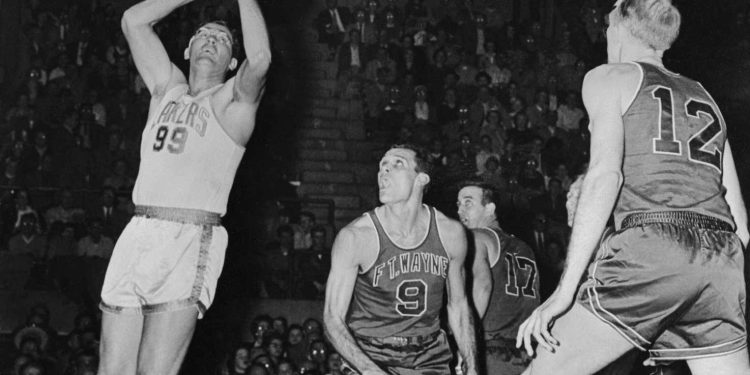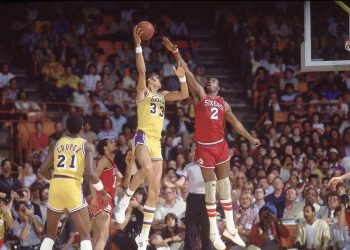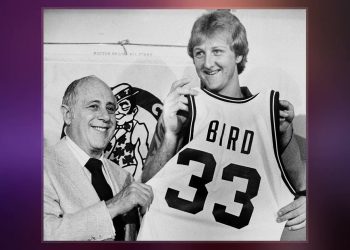You know, the lowest scored game in NBA history isn’t just a story of numbers on a scoreboard. It’s a fascinating tale from the annals of basketball, an era where modern conveniences like high-tech shoe designs and advanced data analytics were nowhere to be seen. Set back in the 1950s, it involves a clash between the Fort Wayne Pistons and the Minneapolis Lakers, unfolding into a game that surprisingly only totaled 37 points. Yes, you heard that right—37! This unforgettable encounter didn’t just produce a record low score, it also gave rise to conversations that reshaped the fabric of basketball strategies.
The Day That Set the Record
To start with, let’s revisit November 22, 1950. It’s a date that, if you’re an NBA history buff, probably rings a bell. The context of this game is just as interesting as the game itself. Post World War II America saw a boom in sports attendance, but the style of basketball was yet to evolve into the fast-paced spectacle we see today. The clash between the Fort Wayne Pistons and the Minneapolis Lakers ended with the Pistons emerging as winners, albeit the score resting at a mind-bogglingly low 19-18. How could such a score come to pass? It’s a story rooted in strategic gameplay, or as some might say—a bit of reluctance to abandon a lead.
Strategic Play or Stagnation?
You might wonder, what were they thinking? The game wasn’t just about missed shots or defensive prowess; it was an era where holding the ball as a strategy wasn’t frowned upon. The facets of gameplay were dramatically different, with stalling and holding ball possession being legitimate tactics. This game, in particular, highlighted how teams used strategy as much as skill to win—even if it meant putting offense on the back burner.
The Role of Rules and Regulations
Ah, the beauty of hindsight! Imagine watching a game today without the 24-second shot clock. It’s hard to, right? The absence of the shot clock in 1950 made these slow, methodical games possible. Eventually, though, these strategies set the stage for rule changes, birthing the shot clock era that began in 1954, which revolutionized the game into a faster, more aggressive sport.
Behind the Numbers
Could it be that players then were less skilled? Not exactly. The league back in the day had its share of talented athletes. Take George Mikan, for instance, regarded as the NBA’s first superstar. Yet this low-scoring game managed to unfold with him on the floor. A collision of cautious play and defensive focus turned that day into a statistical anomaly.
The Aesthetic of Old School Basketball
*Did you know?* Basketball games in the mid-20th century were often compared to chess matches. The thinkers were just as revered as the sprinters. The 19-18 score wasn’t a fluke but an outcome of basketball’s chess element back then. Games were played with a leg-up mentality—protecting a lead was an art.
Games That Echoed the Low Scoring Trend
Interestingly, this peculiar 1950 matchup was not alone. There were other instances of quaintly low scores, though none dipped as drastically. Perhaps, it was just waiting for a shot clock to provide the shake-up needed to unshackle basketball from its low-tempo stride.
- 1955: Milwaukee Hawks vs. Boston Celtics, 62-57
- 1956: St. Louis Hawks vs. Detroit Pistons, 59-58
- 1964: San Francisco Warriors vs. Cincinnati Royals, 62-60
How the Past Influences the Present
It’s fascinating how innovation often springs from our past inefficiencies. The low-scoring game’s influence touches today’s high-velocity contests. The roots of modern basketball, with its flare and intensity, can find some grounding in these cautious, slow-paced past confrontations.
| Year | Game | Score |
|---|---|---|
| 1950 | Fort Wayne Pistons vs. Minneapolis Lakers | 19-18 |
| 1955 | Milwaukee Hawks vs. Boston Celtics | 62-57 |
| 1956 | St. Louis Hawks vs. Detroit Pistons | 59-58 |
| 1964 | San Francisco Warriors vs. Cincinnati Royals | 62-60 |

FAQ: Unveiling the Mysteries of NBA’s Lowest Scores
Why was the scoring so low in the 1950s game?
The game of basketball in the 1950s allowed for strategies like stalling due to the absence of certain rules, such as the shot clock.
Was anyone notable playing during this low-scoring game?
Yes, players like George Mikan, a prominent figure in early basketball history, participated in this game.
Did the low scoring affect any major rule changes?
Absolutely, it led to the introduction of the shot clock in 1954 which fundamentally changed the game’s tempo.
Closing Thoughts: Basketball’s Evolution
The NBA’s lowest scored game may have been short on points, but it was full of lessons. A reminder that within sports, as in life, sometimes constraints lead to creative breakthroughs. It can be astonishing how something seemingly straightforward—like a basketball game—can thrum with the currents of history and the makings of future innovation. Thanks for exploring this fascinating chapter of basketball’s story with us. Be sure to check out other intriguing tales on our website.











